Rajas, Brahmins, and Landlords
Land and Caste, Part 1
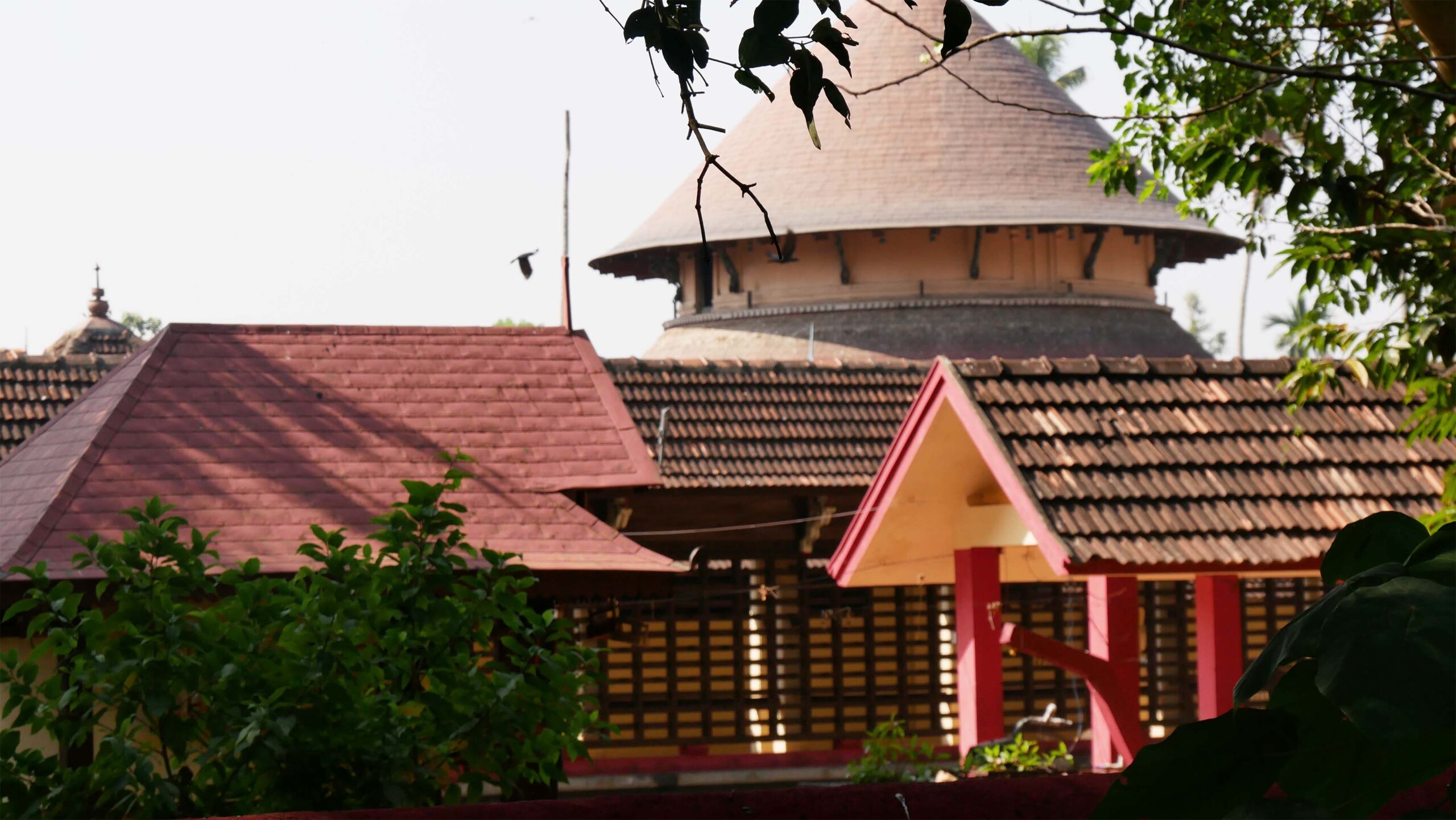
The Arrival of the Namboothiris
“The story goes that most priestly clans, warriors, and landlords were killed during the Mahabharata War. Parashuraman brought Brahmins to settle on the land. The Namboothiris of Kerala migrated from Karnataka and Andhra Pradesh.”
– M.D. Kaimal, NSS Secretary, Purapuzha, 2024
Contrary to the legend of Parasurama, which suggests royal initiative, the settlements were primarily the result of organised migration by select Brahman families from previous settlements. The fertile river valleys in Kerala provided an ideal environment for the settlements. These regions were often waterlogged and marshy and required extensive labour to be converted into agrarian fields. Agro-pastoral families staying along the hilly fringes of the marshy wetlands became their primary workforce. These families engaged in cultivating millet and paddy. Additionally, groups specialising in arts and crafts were permanently attached to Brahman lands through bonded labour arrangements.
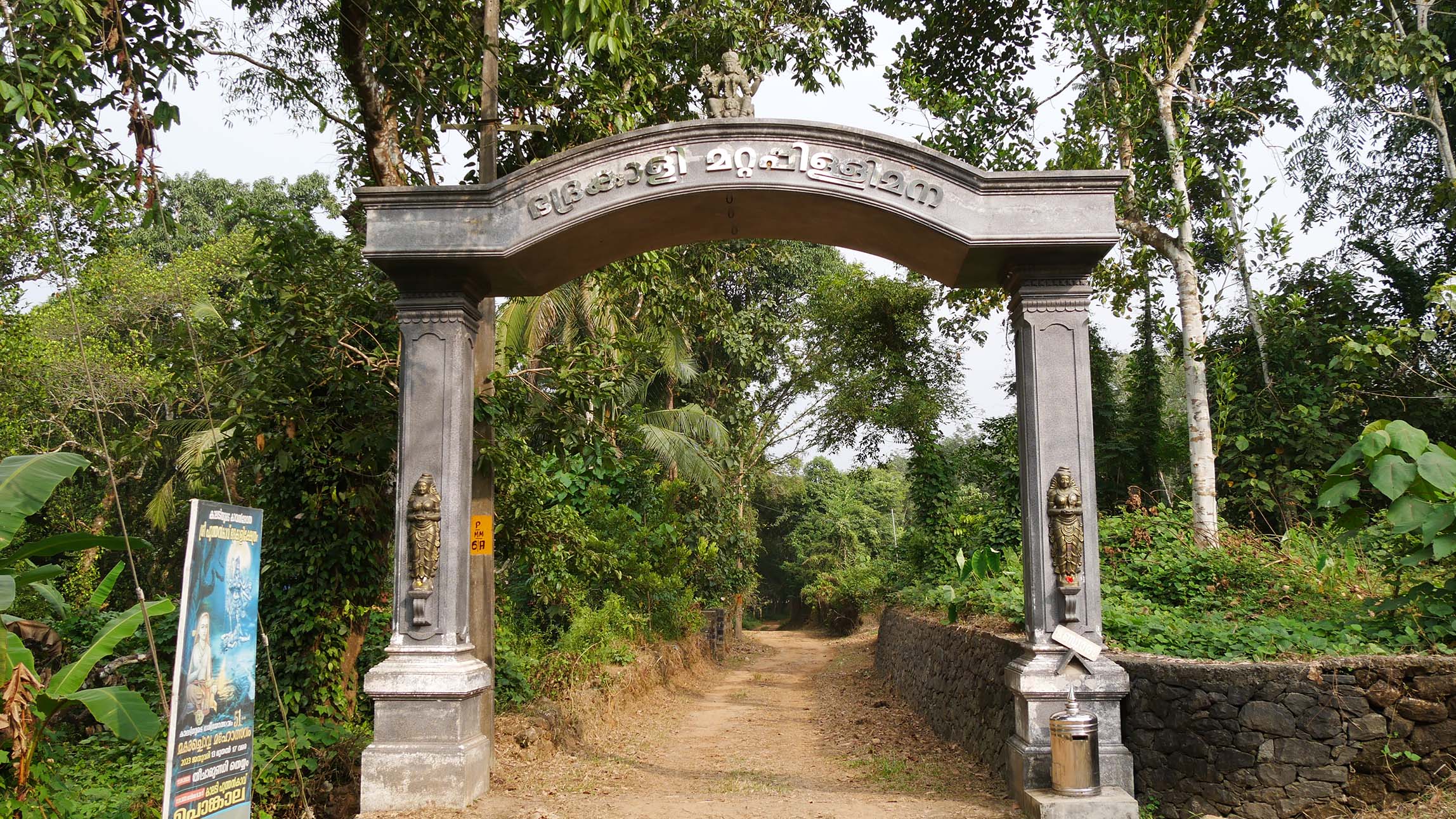
Mattappally Mana
“The palm leaf umbrella carrying the Goddess Bhadrakali once placed on the ground here, could not be lifted again. And then Bhadrakali’s presence was felt here. This history is similar to that of other places where Bhagavathi is supposed to reside.”
– Vasudevan Namboothiri, Retired Assistant Educational Officer, Puliyanam, 2023
The lands held directly by the Brahmins are called Brahmaswom and those held by the temple are today called Devaswom. The Brahmin settlements in Kerala were temple-centred. The temple committee looked after the property belonging to Brahmins and the temple.
“Some temples also had a Brahmin army. For example, places called shalas, like Moozhikulam Shala and Thiruvalla Shala, were places where, together with the shastras, the use of weaponry was taught. Among the Namboothiris, there was a group trained in weaponry called Shastra Namboothiri. When a decision was taken in the temple, they would stand outside with their weapons. Earlier the Namboothiris themselves did guard duty; the Nair brigade and all came later. They had to bring the Nairs into submission before making them soldiers.”
– Vasudevan Namboothiri, Puliyanam, 2023
The Brahmin settlements grew and began to amass wealth, influence, tenants, and servants over the centuries. From the initial low-lying paddy cultivation zones, the Brahmins moved to the midland terrains of Kerala.
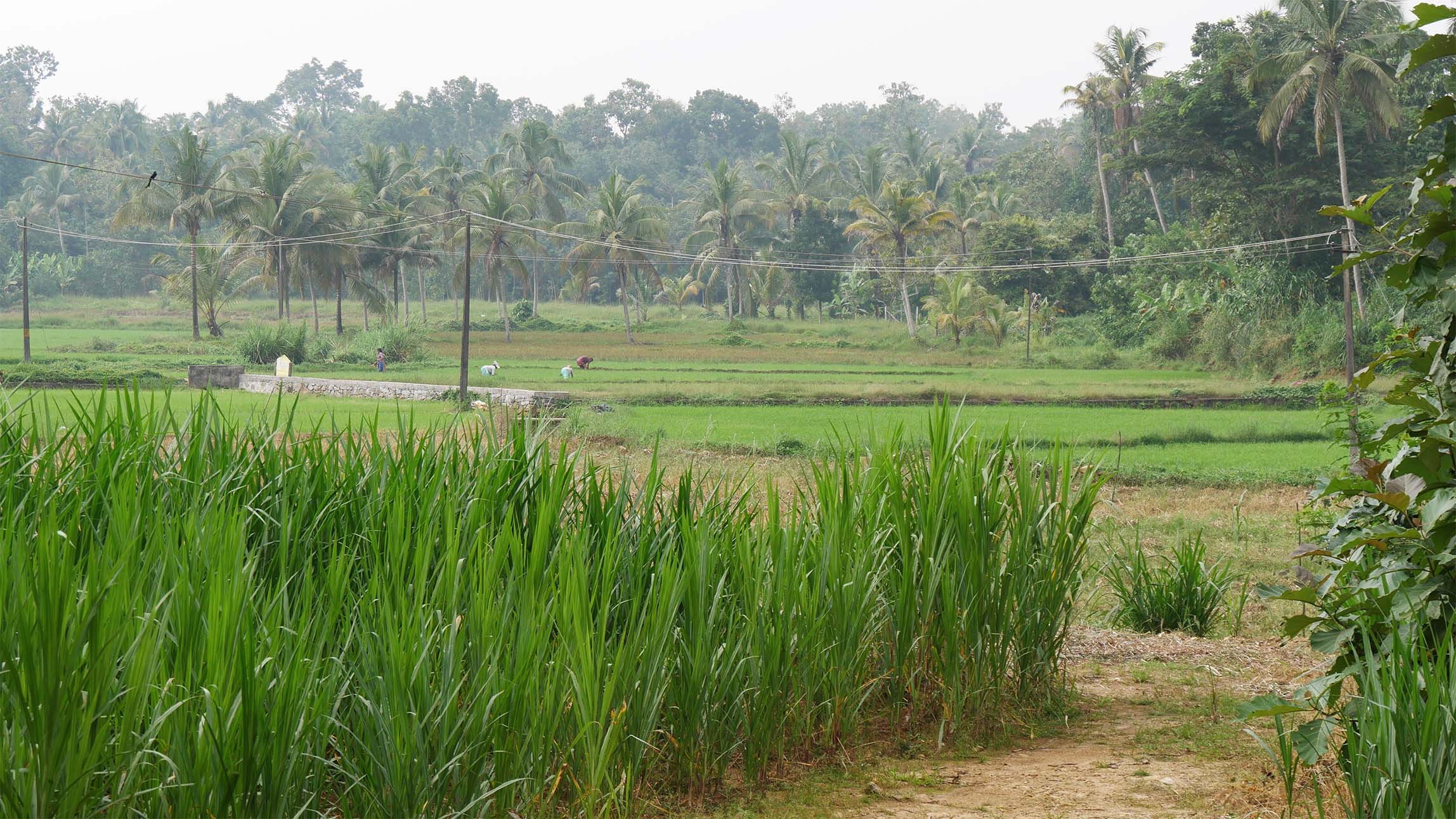
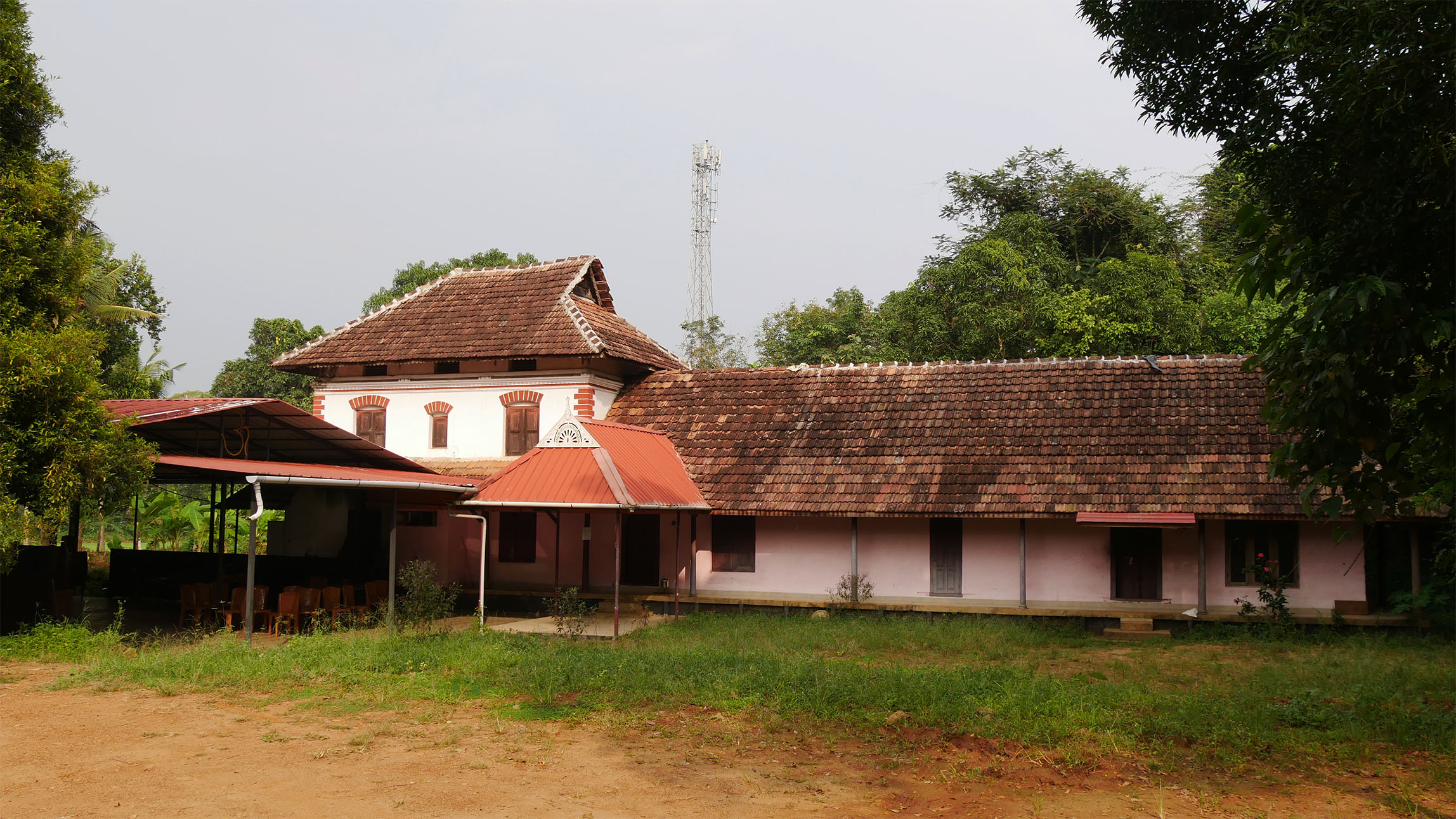
“Sometime in the 1400s, ten families named Mattappally merged into one. There is a possibility that they accumulated land following this merger. The family previously held land in places like Angamaly, Aluva, and Karukutty. We’ve heard it said that 35,000 para of paddy (1 para, approx. 10 kg) used to be received. The land was around 25 acres, and the tharavad itself is 12 acres.”
– Vasudevan Namboothiri, Puliyanam, 2023
“Kings and landlords coveted a position in the temple as it was one way to accumulate wealth.”
– Vasudevan Namboothiri, Puliyanam, 2023
Parur Raja's Pension
“The entire Parur (now known as North Paravur) taluk belonged to the Parur Raja. Around 250 years ago, he heard from spies that the Travancore Maharaja was about to attack Parur. He feared the worst and decided to abdicate.
As soon as he heard it, the Travancore Raja came personally to enquire why. The Parur Raja said he could not protect his kingdom if the stronger Travancore armies attacked. He believed that if there was a war, people would suffer and there would be damages.”
– Ravi Sarma Raja, descendant of the Parur Raja, Parakkadavu, 2024
The Travancore king built a house for their use that does not exist anymore. After he abdicated, the Parur Raja received regularly a quantity of paddy and money as pension from the Travancore government.
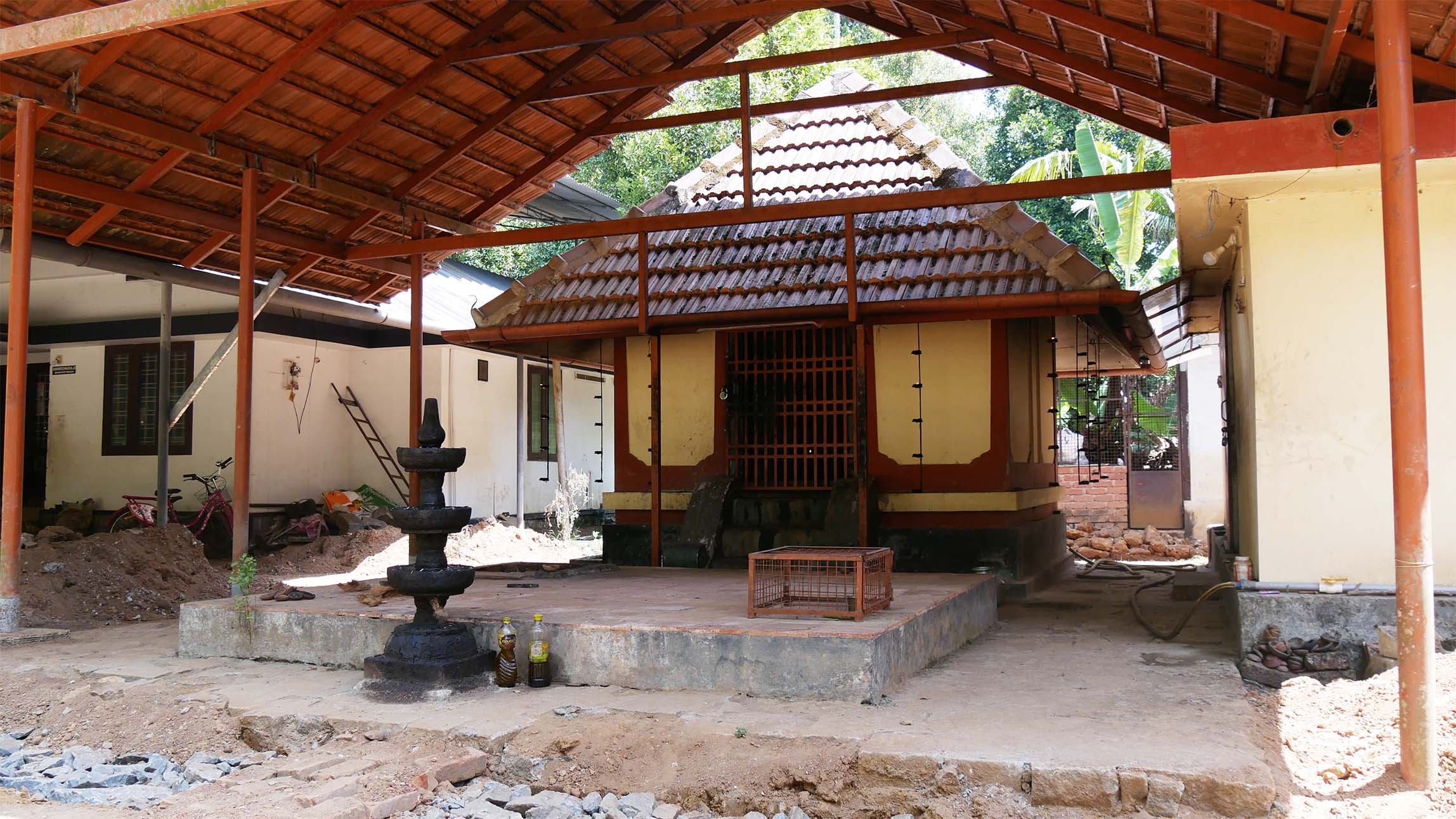
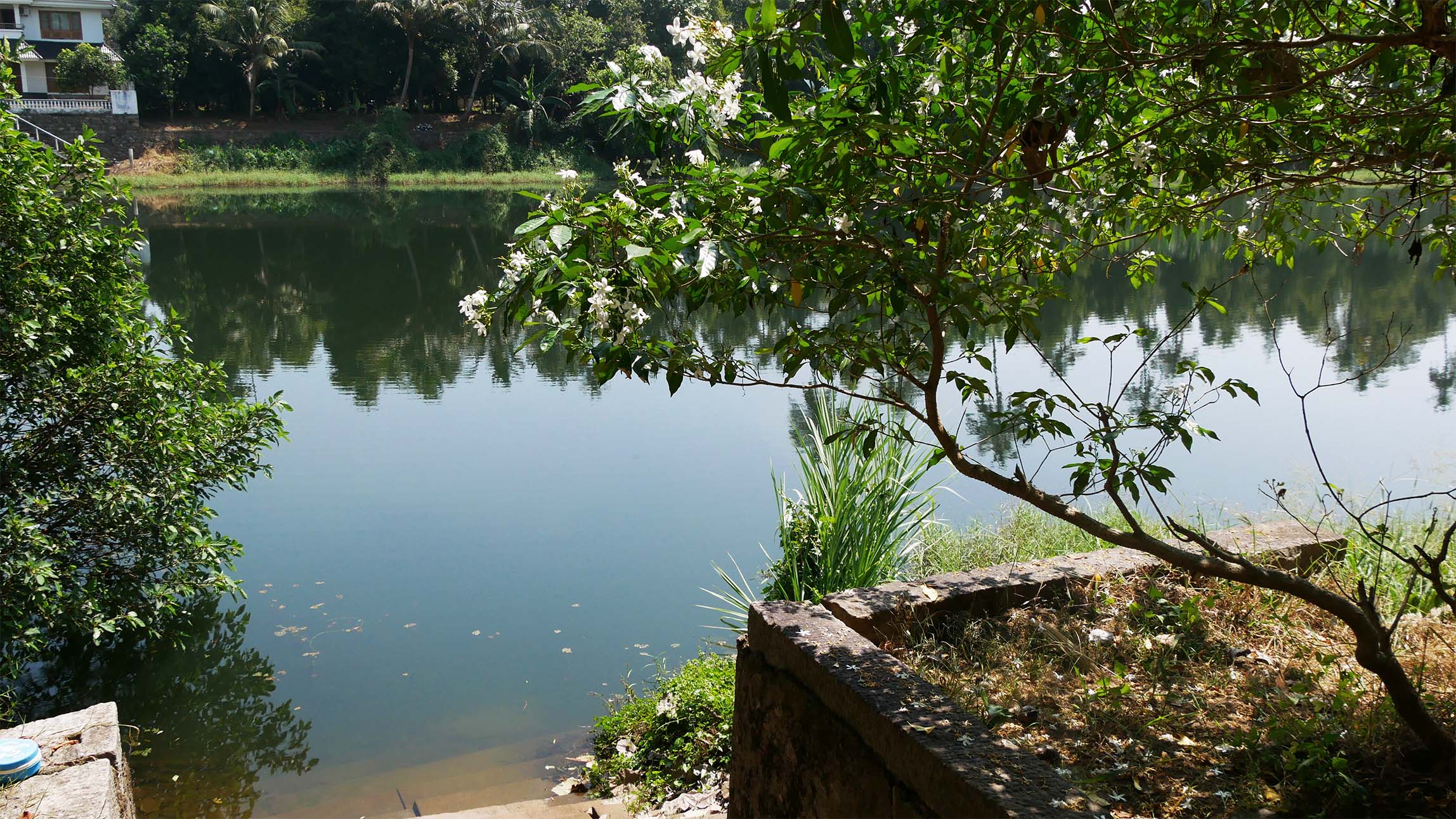
“Beginning about 150 years ago, my grandfather bought land with money saved from the pension. He bought land in other people’s names because he believed that he was entitled only to the pension. Later, these lands were made over in our names.
The acquired lands were given on lease according to the pattasheet, which carried the terms and conditions—the name of the lessee, the quantity of paddy or money, and the number of plantain bunches and so on to be given for Onam. This paddy, called pattom, was sold to buyers who came via the river from places as far as Varappuzha.”
– Ravi Sarma Raja, Parakkadavu, 2024
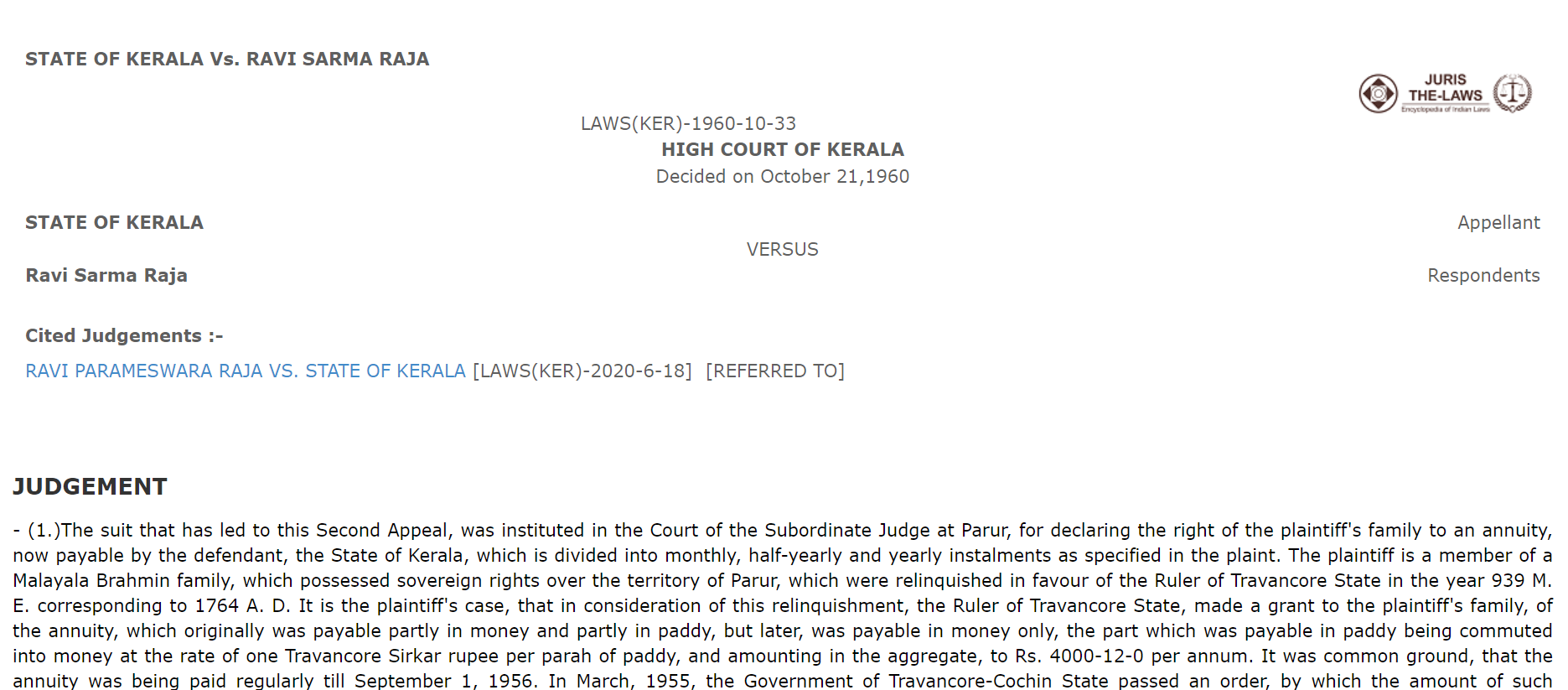
Screenshot of the judgement in the State of Kerala vs Ravi Sarma Raja. Image: www.the-laws.com
The family had to resort to legal battles post-Indian Independence to continue getting the pension. After litigation, it was decided that the eldest living male of the family would receive the entire amount, which he would distribute evenly among the remaining male members. The female members of the family are not entitled to the pension since the Namboothiris follow patriliny.
Tenancy Cultivation
“Vaaram (a kind of tenancy) meant the land was cultivated, and the expenses were borne by the tenant. The harvest was brought to us here. We would take half the paddy and the hay. This is called pakuthivaaram. Later, as a kind of compromise, half the land was given to them, and we retained the other half. Only paddy fields were given.”
– Ravi Sarma Raja, Parakkadavu, 2024
The land around the house also had cash crops like nutmeg, mango, and others. Coconut and areca nuts were sold, while the other produce was mostly used for their consumption.
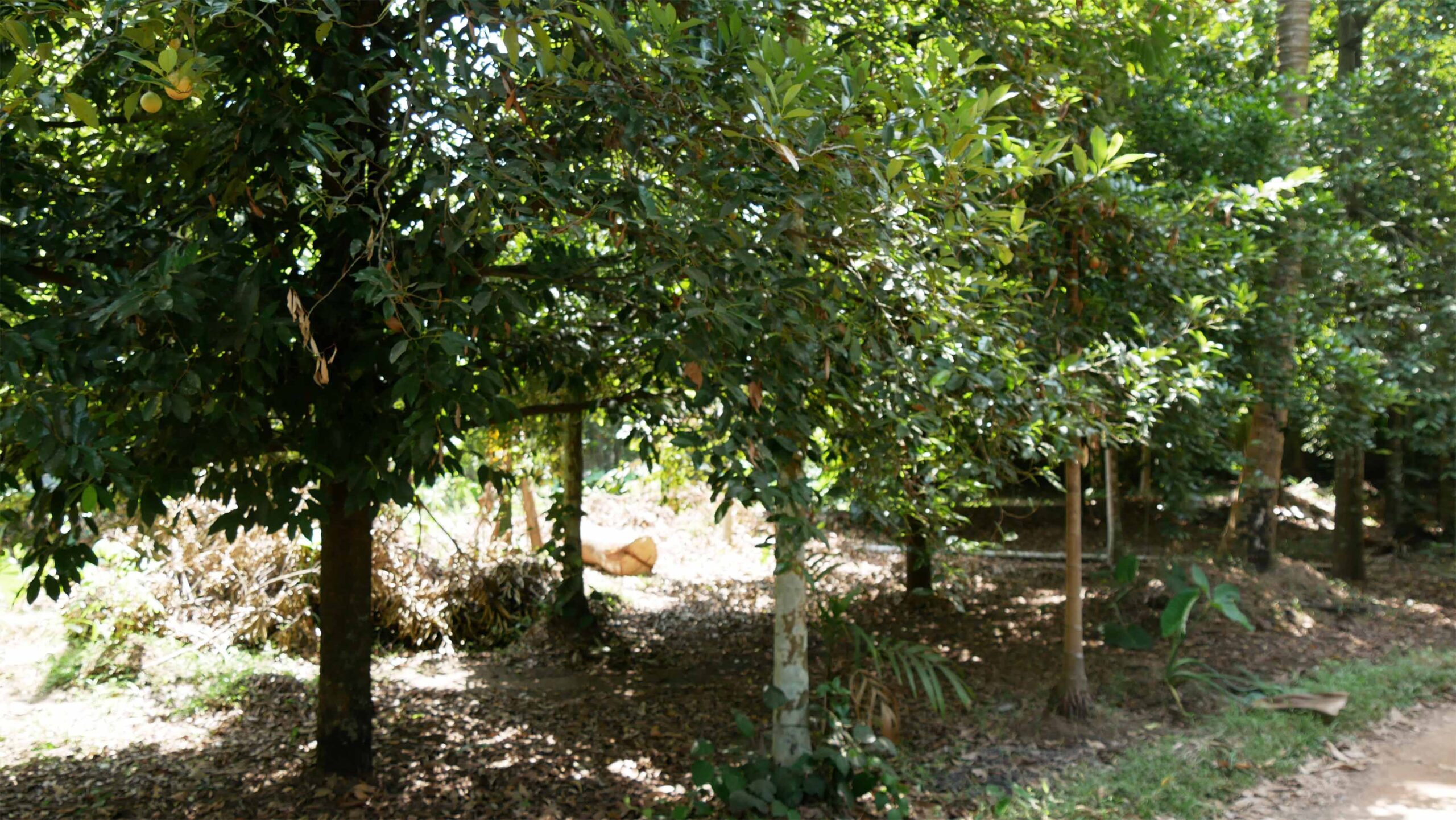
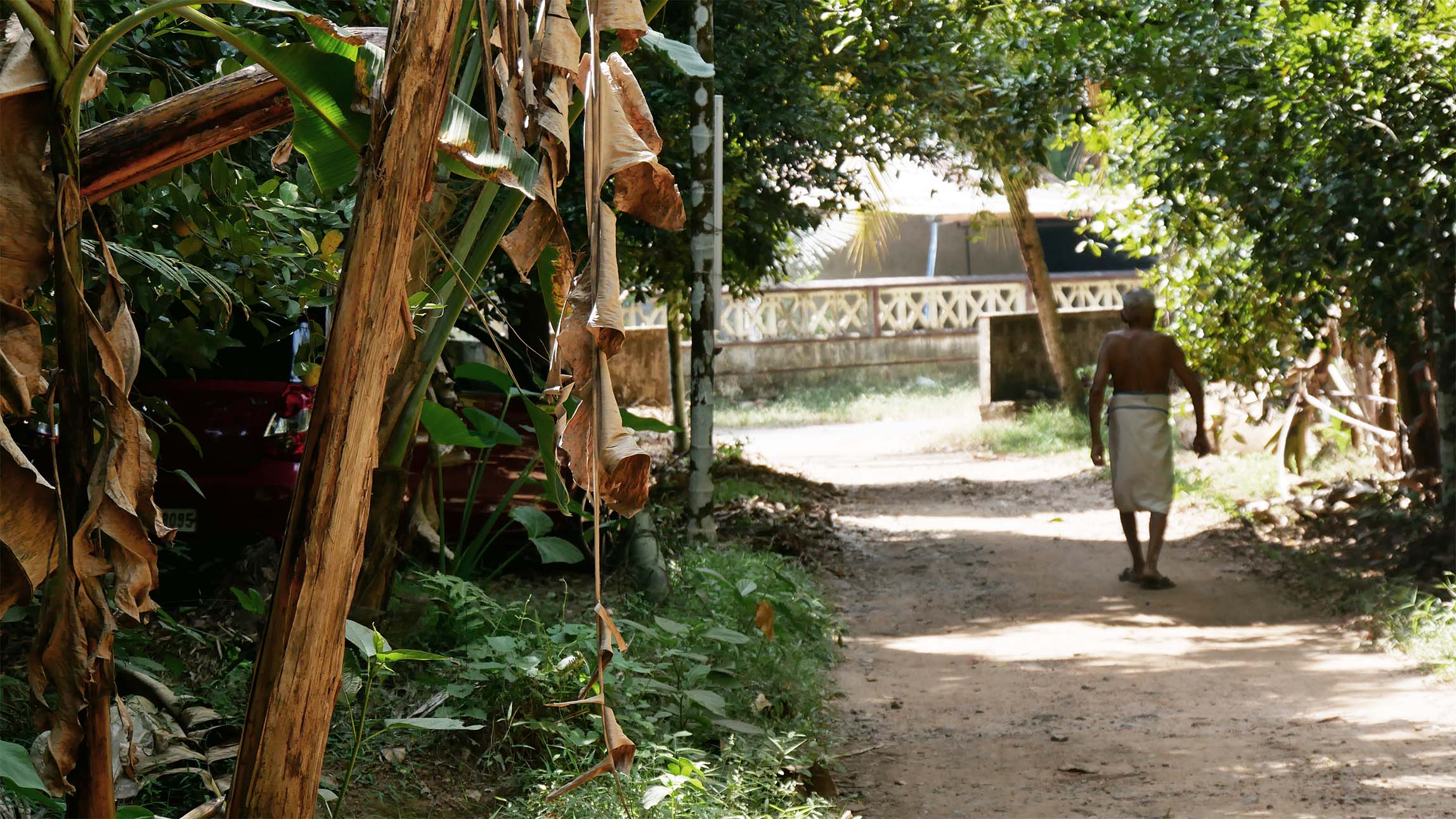
Tenure Diversity
Tenancy practices worked differently for different groups. There are rules about who can use land, for how long, and in what ways. In pre-independent Kerala, this depended on geography, caste status, and the ruling authority.
Historically there were four main kinds of land ownership:
- Janmam: This was a lifetime right held by Rajas, Namboothiris, Temples, as well as naduvazhis (chieftains) who supplied soldiers to the king.
- Kanam: This was a proprietorship tenure held by Nairs and their sub-groups.
- Verumpattom: These were temporary lease agreements given to Nairs, Ezhavas, Muslims, and Syrian Christians.
- Agrarian Slaves: Pulaya, Paraya, Cheruma, and other lower castes were tied to the land and could, in certain instances, be bought and sold.
Labouring Castes
People belonging to the Pulaya caste worked in the fields in Puliyanam. Because of the prevailing practice of ashudi (caste untouchability), they were not allowed to enter the household compound. Thambran ennu villipikkum, pallayill kanji kudipikkum was a saying of the Pulayas (You make us call you landlord, and you give us rice on palm leaves). Cooked rice was poured into a hole dug into the ground and covered with leaves, outside in the fields, for them to eat.
“Different kinds of palmleaf umbrellas was used to protect from the sun and the rain. The Parayas made these umbrellas, and the man supplying them would come to the south side of the property and call us. Someone would take food and grain to him there. Objects provided by the lower caste had to be purified before they entered the house. I do not remember the umbrella being purified.
Several kinds of workers were at home—household cleaners, those who cleaned the grounds, and those who cared for the children. They were all Nairs, called adiyan, with certain rights. It is a continuation of the old slavery system. Many of the workers were from the same families and they divided the work amongst each other.”
– Vasudevan Namboothiri, Puliyanam, 2023
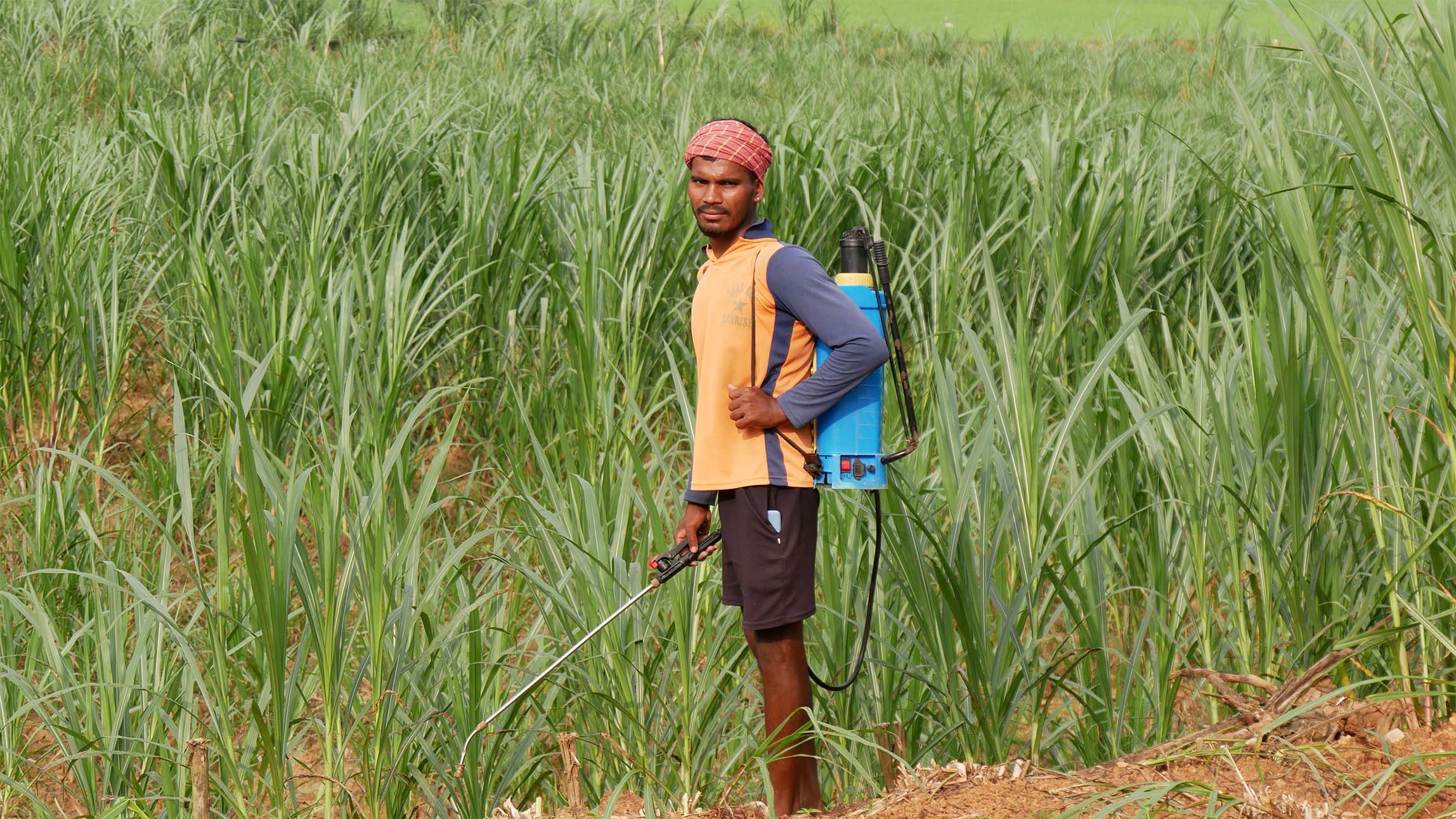
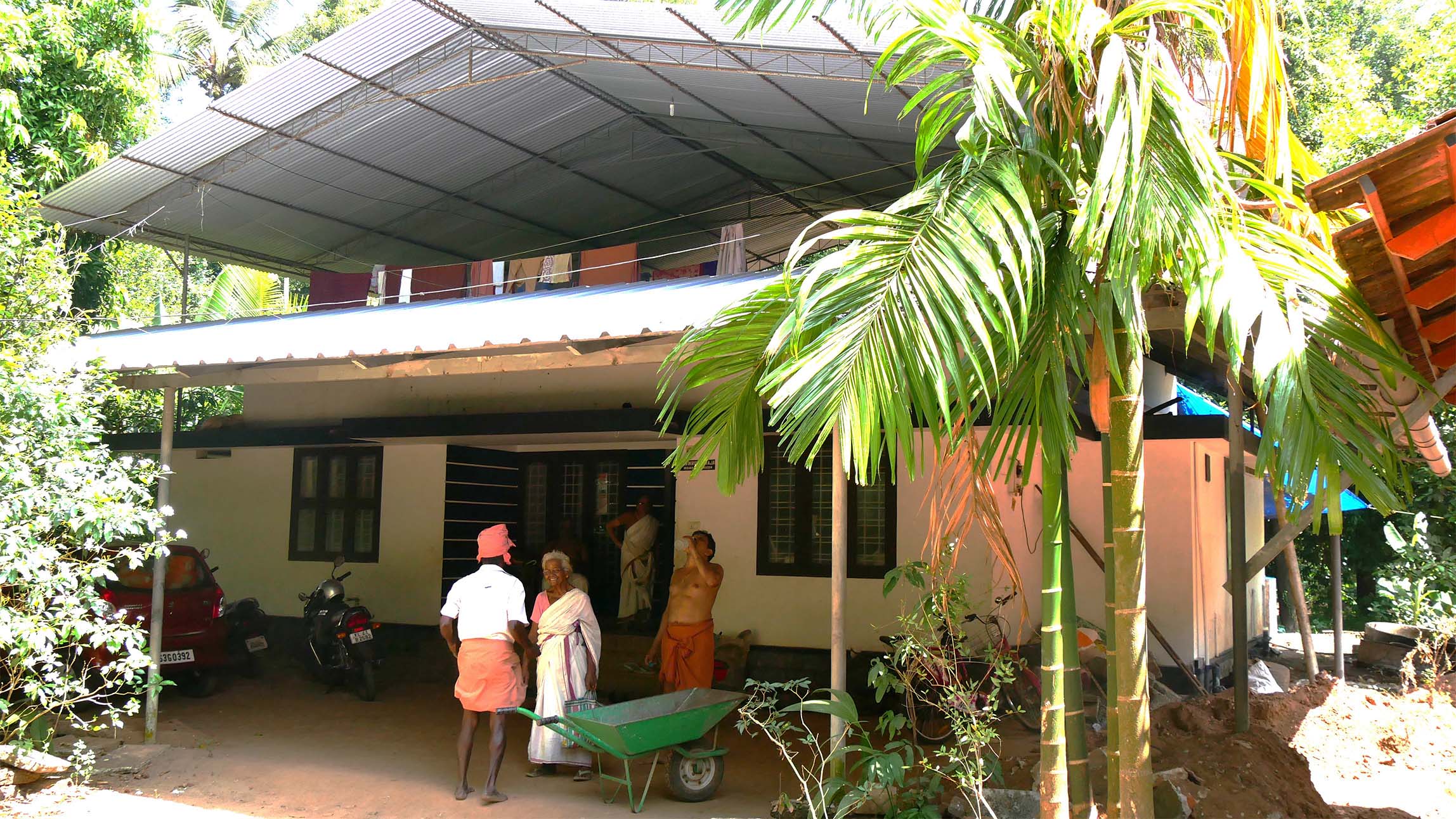
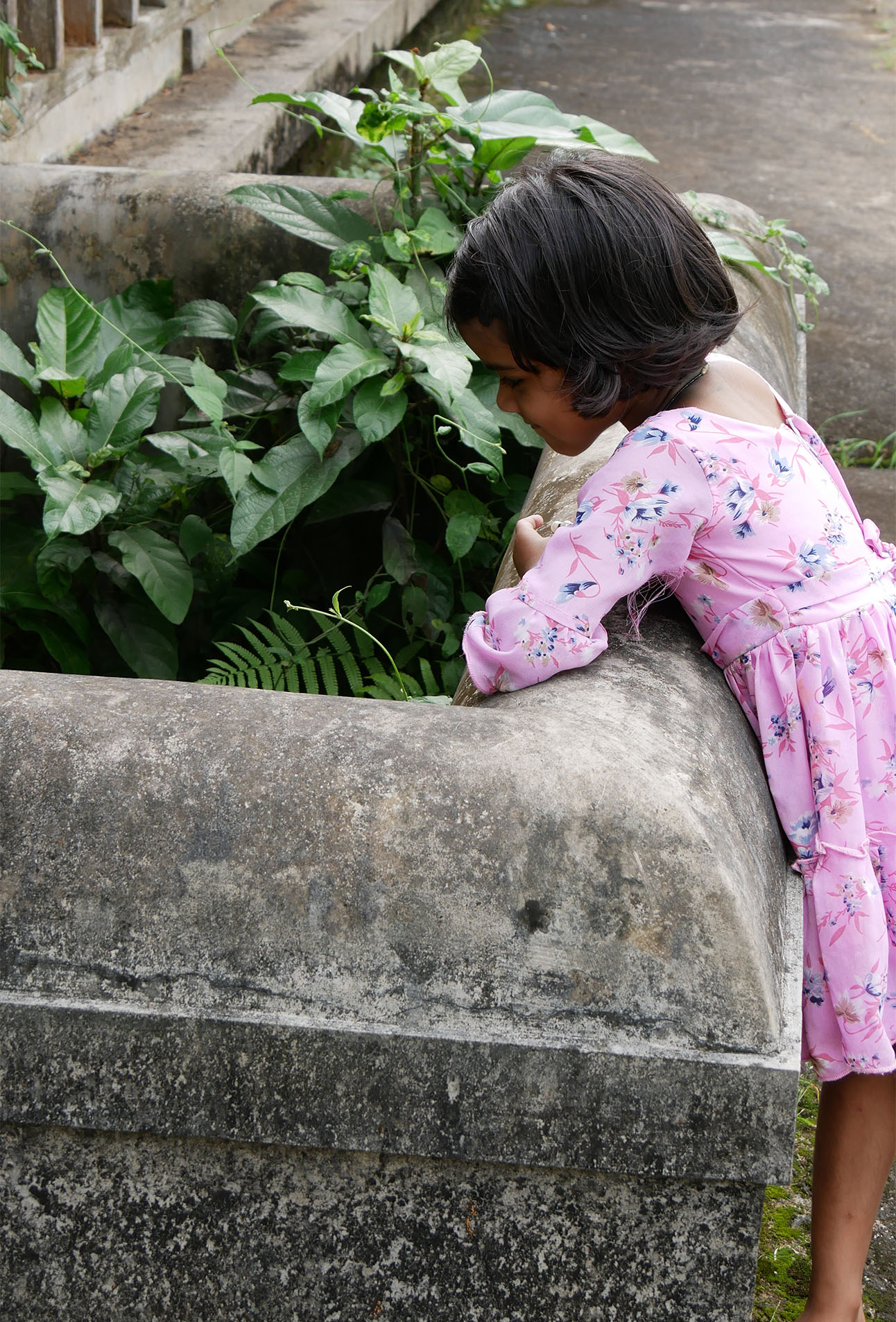
Castes and Spaces
“For the nivedhyam, rice was needed—taken care of by a Nambisan who used to stay in the eastern part of the land. Nambisan would be given paddy. He would do the processing and give the rice to the temple. Paddy was also Nambisan’s salary. In those days, for work related to the temple, compensation was given in the form of cooked rice.”
– Vasudevan Namboothiri, Puliyanam, 2023
“Two families belong to the Ambalavasi caste here. Earlier, they used to do jobs connected to the temple. Now, all of them are employed outside. They made the garlands and cleaned the temple premises. The poojari cleans the space inside the sreekovil (sanctum sanctorum).”
– Ravi Sarma Raja, Parakkadavu, 2024
“In the past, clothes were brought by Chettiar travelling salesmen. In my childhood, we used to go to places like Aluva and Parur by vanchi or boat to buy clothes. Most other things were available at home. Items like knives were brought by the Kollan (smith), and woven baskets by other castes during Onam as tribute (kazhcha). In return, they were given cultivable land on lease.”
– Ravi Sarma Raja, Parakkadavu, 2024
In Parakkadavu, Christians could not enter the house and only worked as field labourers for the Raja’s family. The neigbouring Moozhikulam Church has existed for the last 1400 years ago with many Christian families in and around the village. The kappella or chapel of the church can be seen across the river from Raja’s house in the photograph below.
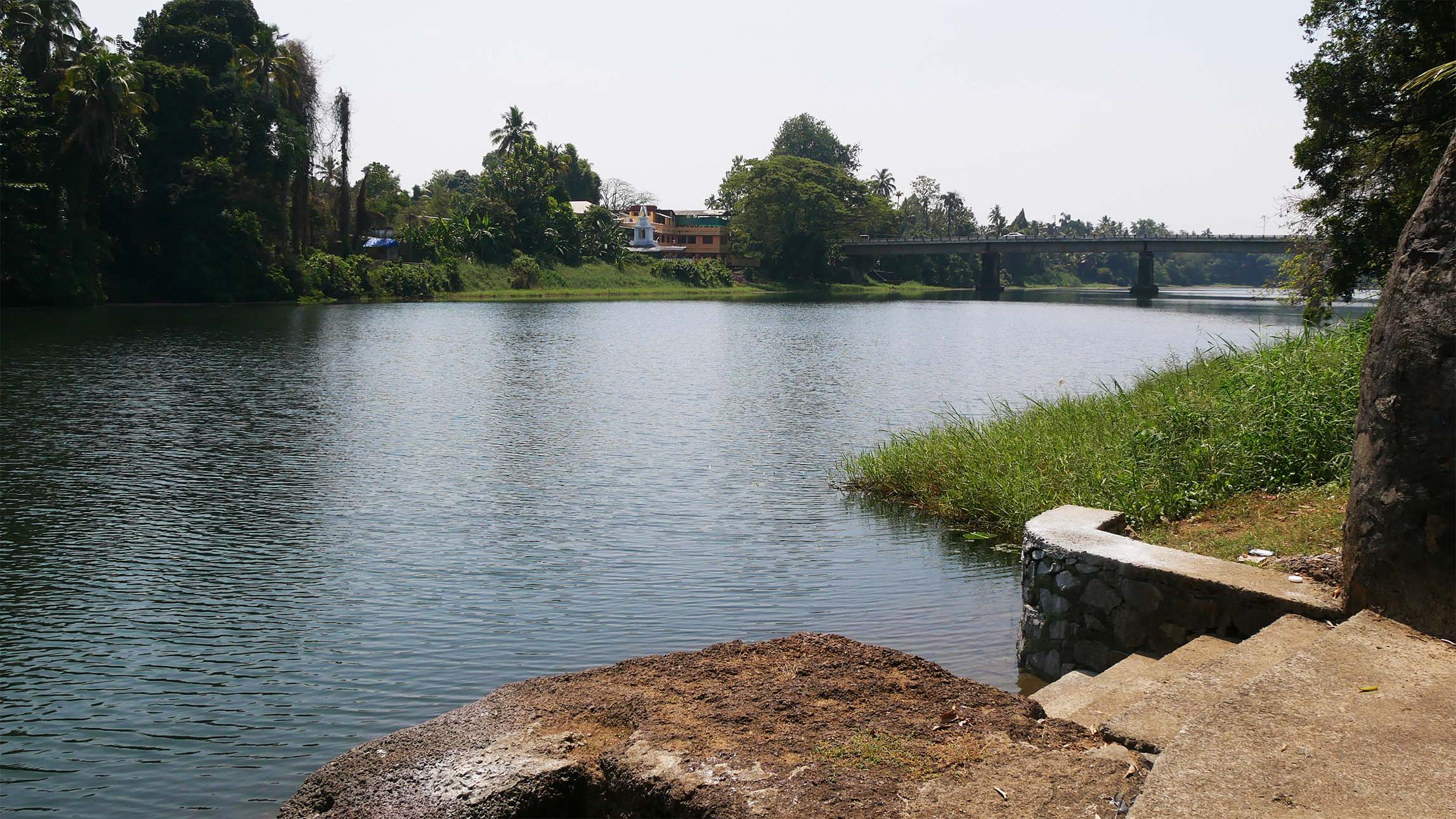
Shifting Temple Linkages
Mattappally Mana had three temples and a sarpakavu (snake abode). In Namboothiri’s courtyard, a structure to house the idol of the Bhagawathi was built in the past. This structure was built specially for his mother to do the morning prayers and poojas without stepping out of the house. It is called a kappella or roopakoodu (identical terms are used for chapels and framed idols within Christian houses or churches). Once Namboothiri’s mother passed away, the deity was moved to their tharavad because there was no one left at their home to do the prayers in the morning.
In contrast, the Parur Rajas had one temple belonging to the family, two other temples belonging to the Devaswom, and a sarpakavu on their grounds. Their family members do the pooja in the Bhagavathi temples, while poojaris belonging to the Devaswom Board do the poojas in the other temples.
“Even now, family members must compulsorily be at the Peruvaram Temple, our ancestral temple, for all ten days of the festival; the thantri only officiates. Giving the koora (dress) and pavitram (halfa grass ring) symbolises our empowerment of the thantri to do the ceremonies in our stead.”
– Ravi Sarma Raja, Parakkadavu, 2024
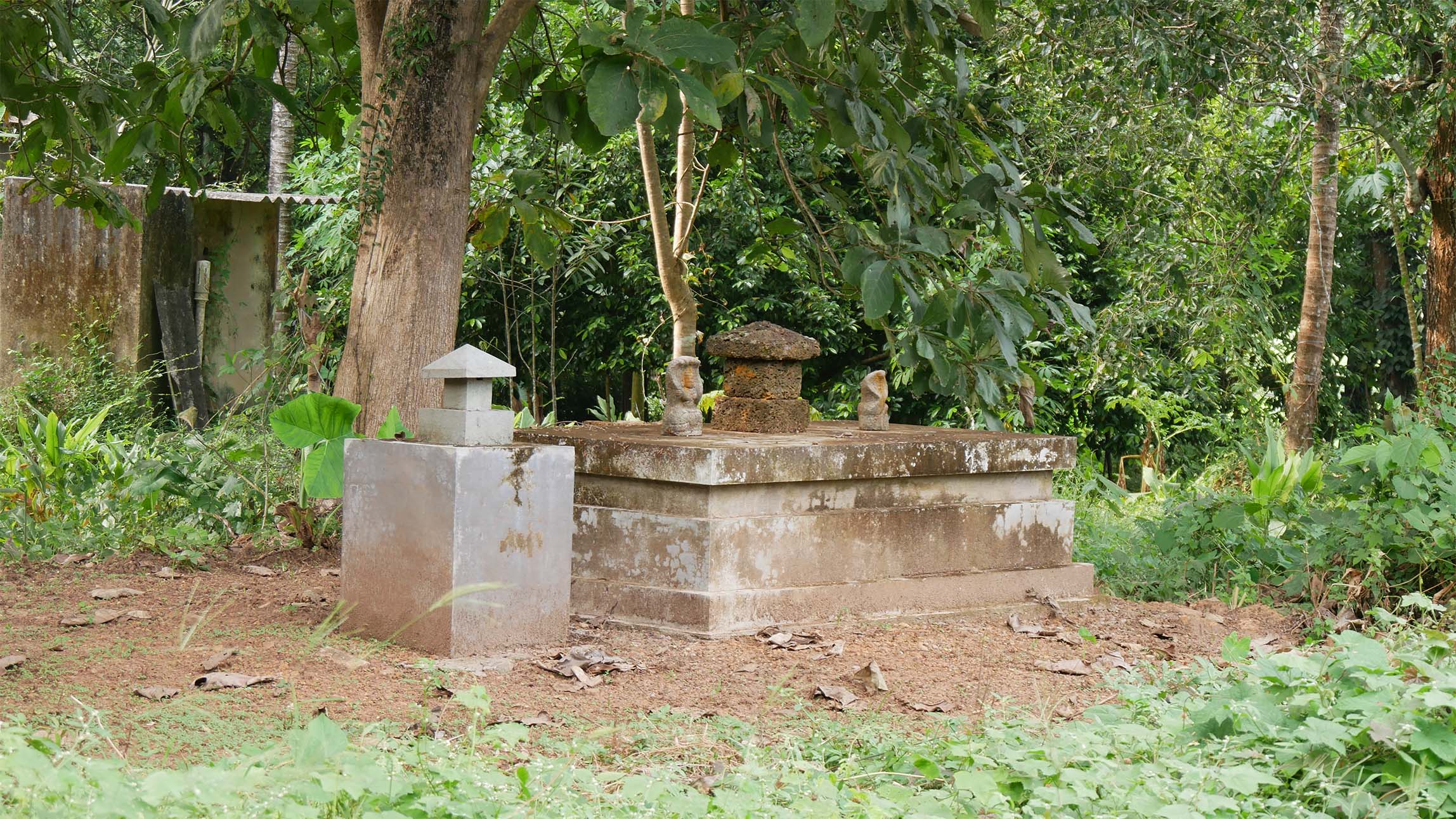
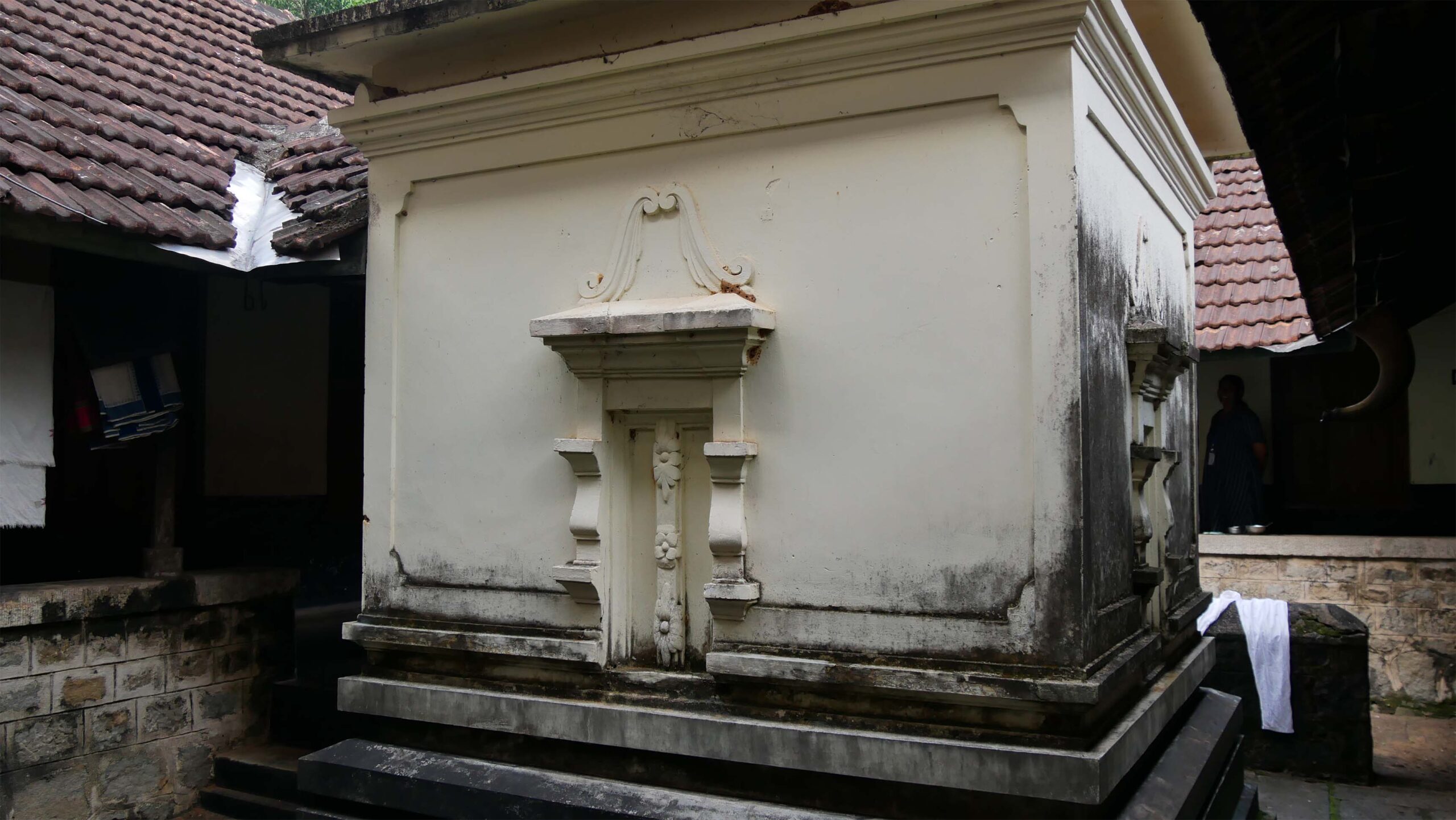
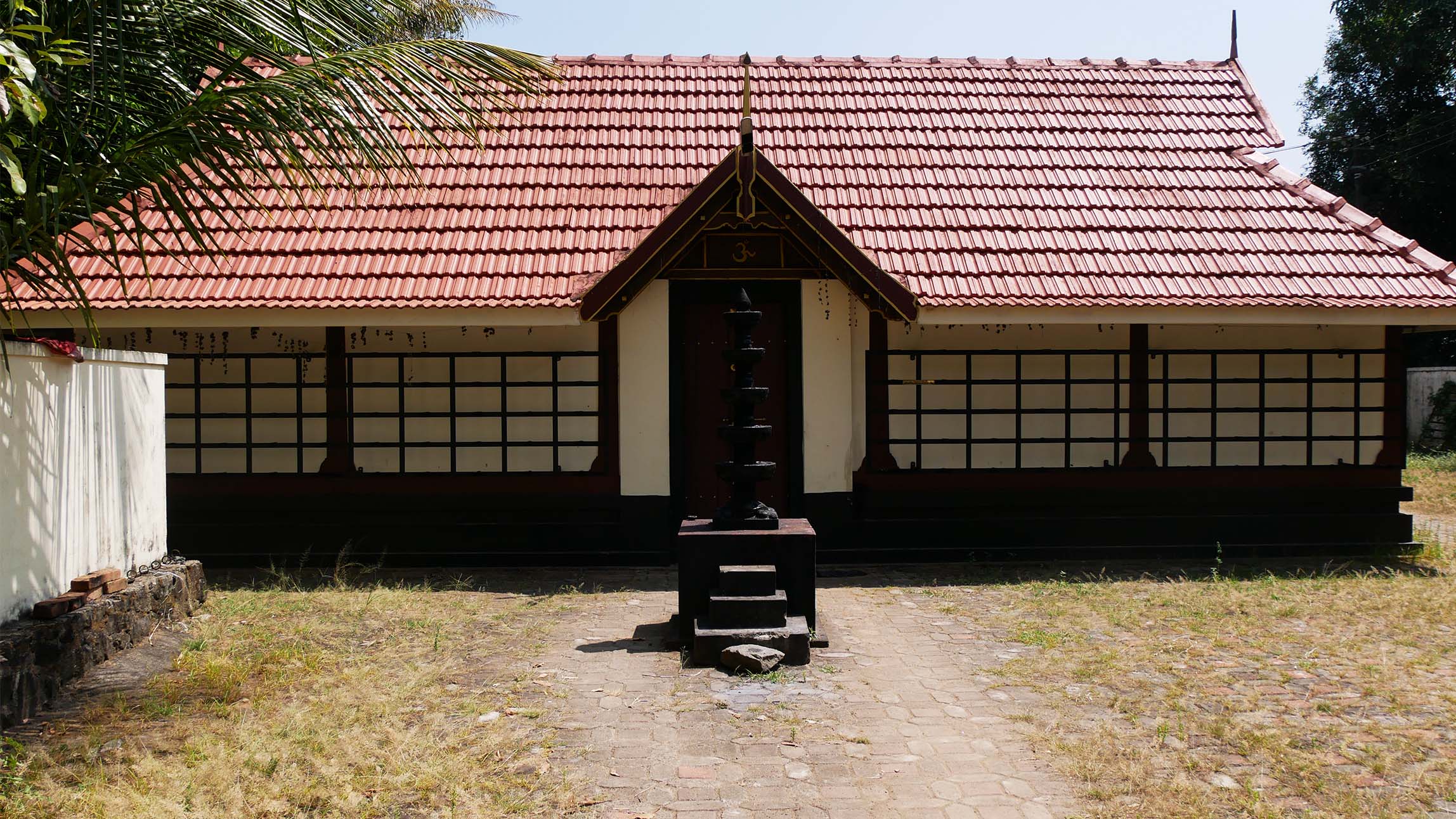
Ponds and Running Water
Running water, like a river or a pond (with its renewable underground source), is usually found near Namboothiri households. Running water was believed to purify the body of all impurities—physical and caste-based (in the past). The women and men in the households take a dip in the pond or river before important rituals. Water from a well is not used for rituals since it is not considered running water, and as Raja playfully said, “One cannot jump into the well to immerse oneself.”
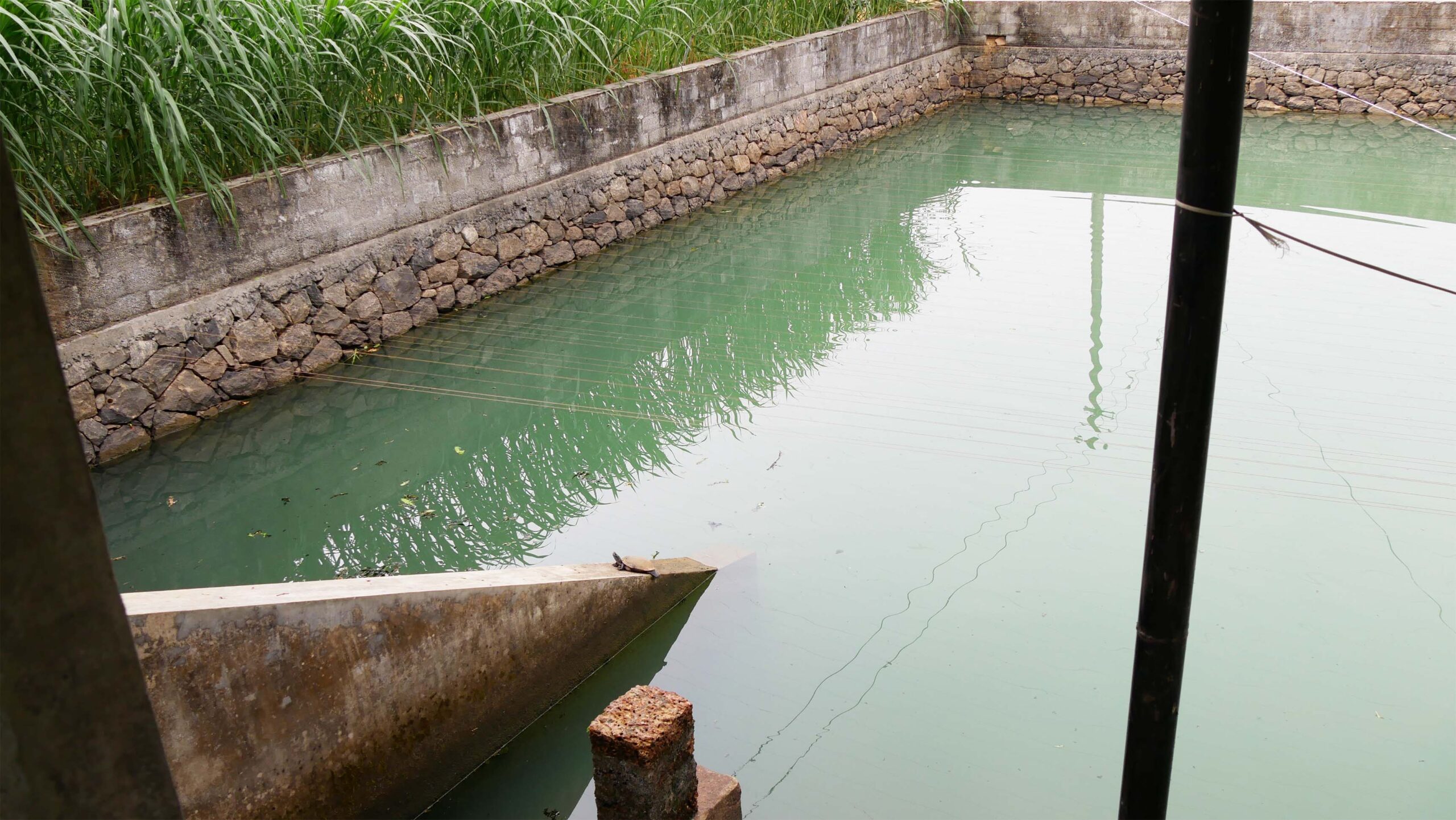
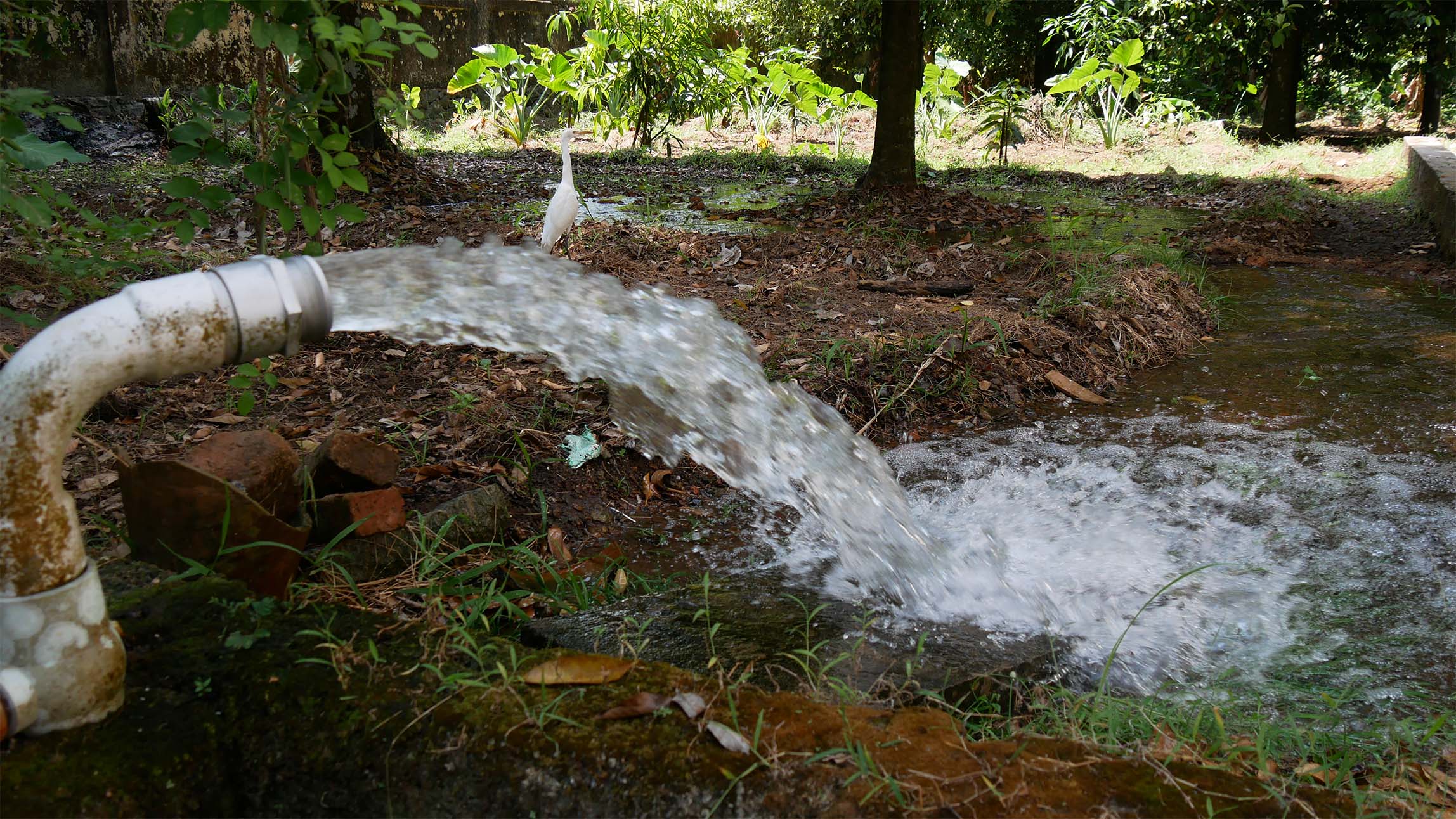
“We had electricity here in the late 1950s or early ‘60s—the first household to get electricity in the village. The line was drawn over the river from Moozhikulam and connected to a motor in a shed. Electricity was given here for agriculture, not for lights. Many years later, when the house was given an electricity connection, the first electrical line was disconnected.”
– Ravi Sarma Raja, Parakkadavu, 2024
Post-Independence Changes
After independence, the various land reform acts passed in Kerala changed households. The Land Reforms Acts that affected Namboothiris were (1) limit on the amount of land that one could own and (2) reforms that gave tenant farmers more rights and security.
“When the Land Rights Laws were passed, the household managers, the Nairs, took care of the legalities. The government took all the land, and we were to receive 12 times the pattom amount in return. There is still a case going on under the Land Tribunal, and I occasionally receive papers to appear at hearings.”
– Vasudevan Namboothiri, Puliyanam, 2023
Geetha Namboothiri mentioned there were times when households did not have enough food to eat. They had transferred their lands under cultivation to the tenant cultivators.

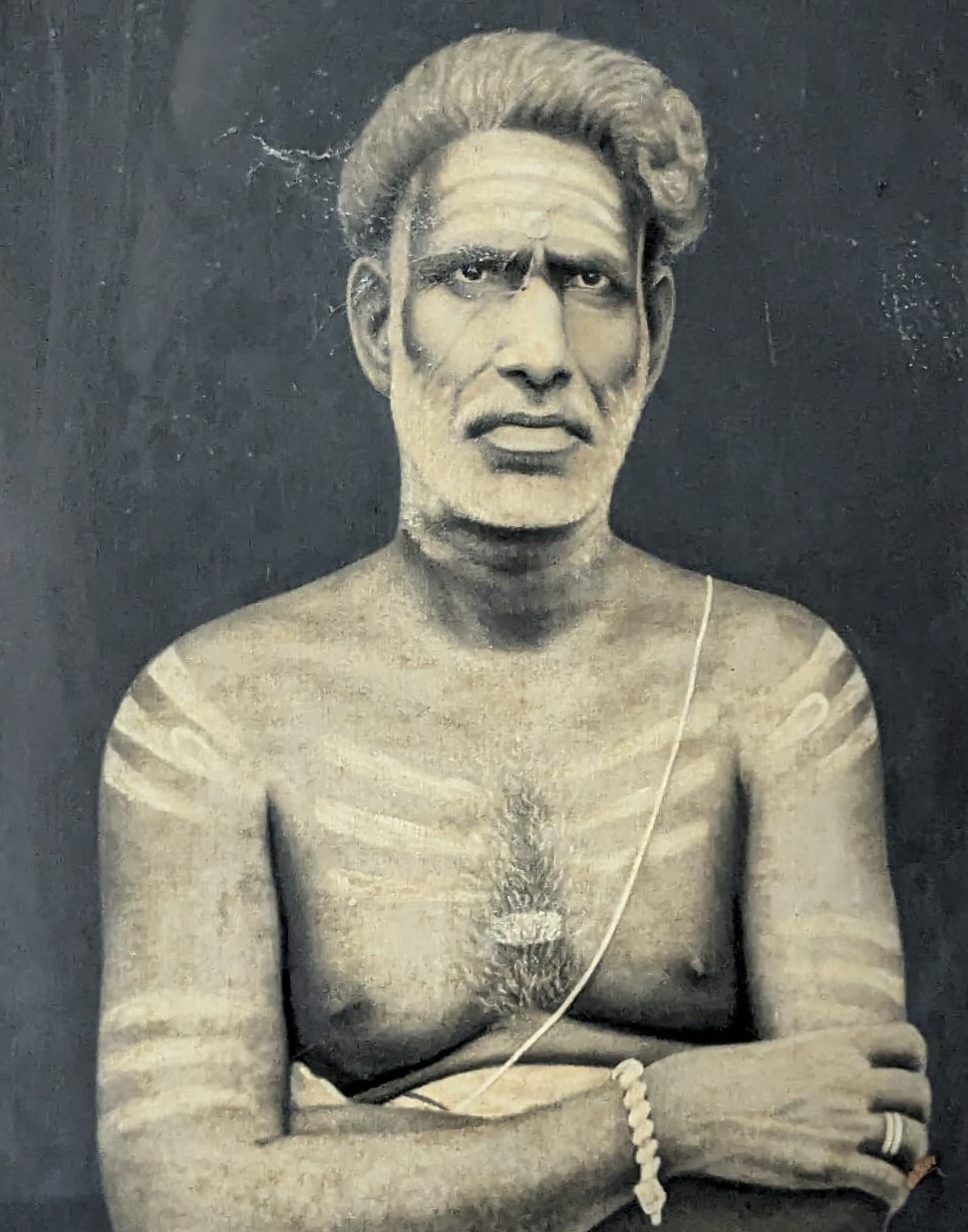
Giving Back to the Community
“There was a story told that the Christian management school quite close by would not give admissions to non-Catholics. People felt the need for a school for the children in the community, so the family gave an empty plot to start classes. A building was constructed, and the school was started as a lower primary in 1947. The land for the Parakkadavu Family Health Centre was also donated by my grandfather.”
Vasudevan Namboothiri, Puliyanam, 2023
Incomes and Expenditures
“My father had started a few business ventures and incurred losses. It may have been because there was not enough income from land. He had a tile factory in Angamaly, which he sold and started another company in Ollur in 1962. That year, the State faced a severe power shortage. Moreover, we didn’t have the required business acumen. By 1970, it was a complete loss.
Large Namboothiri families borrowed from people or institutions. When it couldn’t be repaid in cash, land was sold. In those days, medical costs were not much. Only the rich spent money on treatment. The rest used local ingredients—oil and kuzhambu (ointment)—for treatment.
Marriage ceremonies for girls, the thread ceremony for boys and the death ceremonies were the most expensive affairs in that period. The six ceremonies held for a man, called aaradiyanthirangal (six ceremonies), cost a fair amount of money. Although one couldn’t call these events extravagant, about 200 or 300 people would attend them.”
– Vasudevan Namboothiri, Puliyanam, 2023
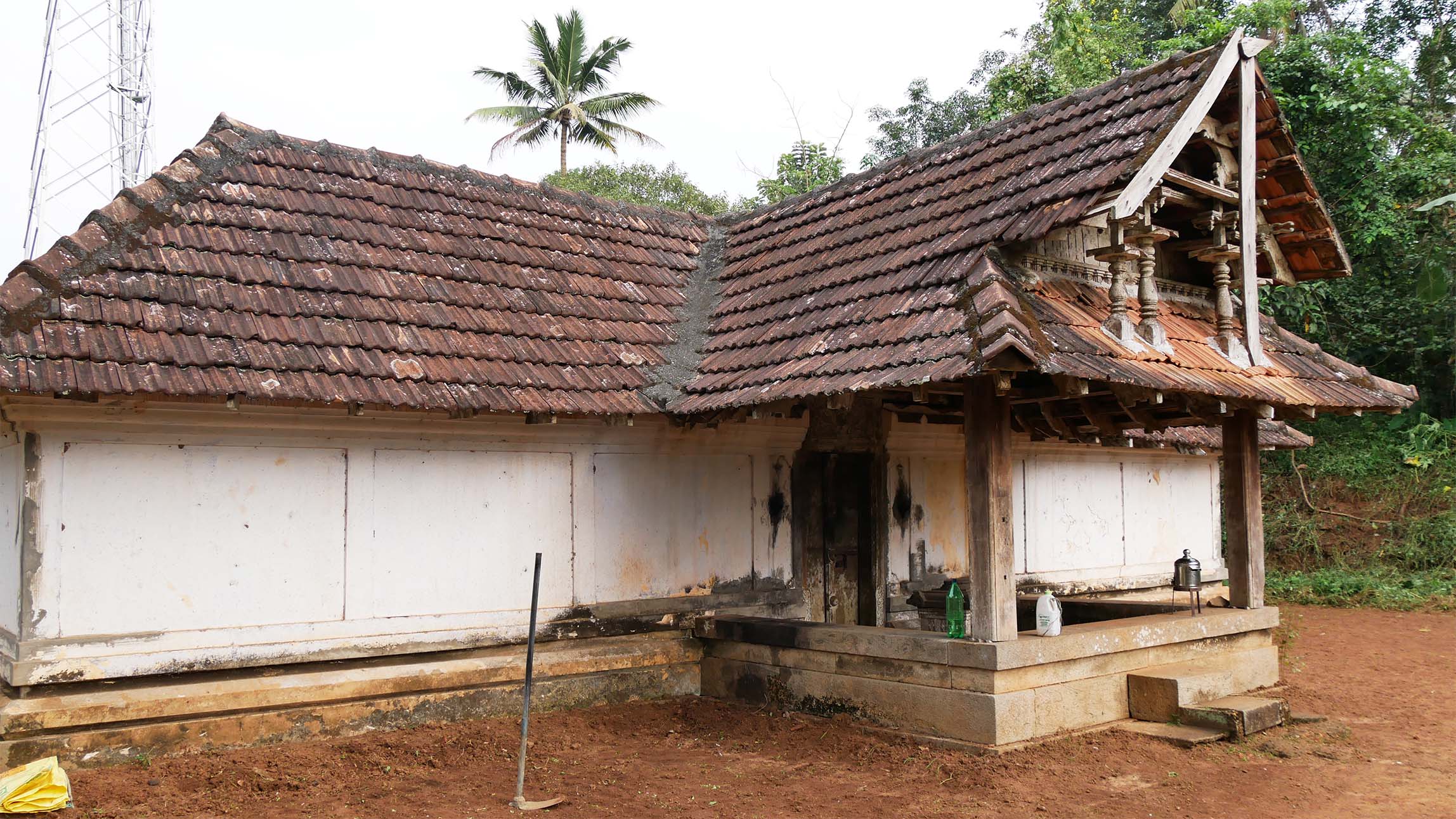
The land surrounding the temple closest to Vasudevan Namboothiri’s house was cleared of weeds after the monsoon in November 2023. Image: JANAL Archives, 2023
While temples were a source of income, their running was another massive expenditure. They would need to pay for the workers’ salaries, maintenance of the buildings, not to mention the various festivals that the community compulsorily celebrates, both now and in the past.
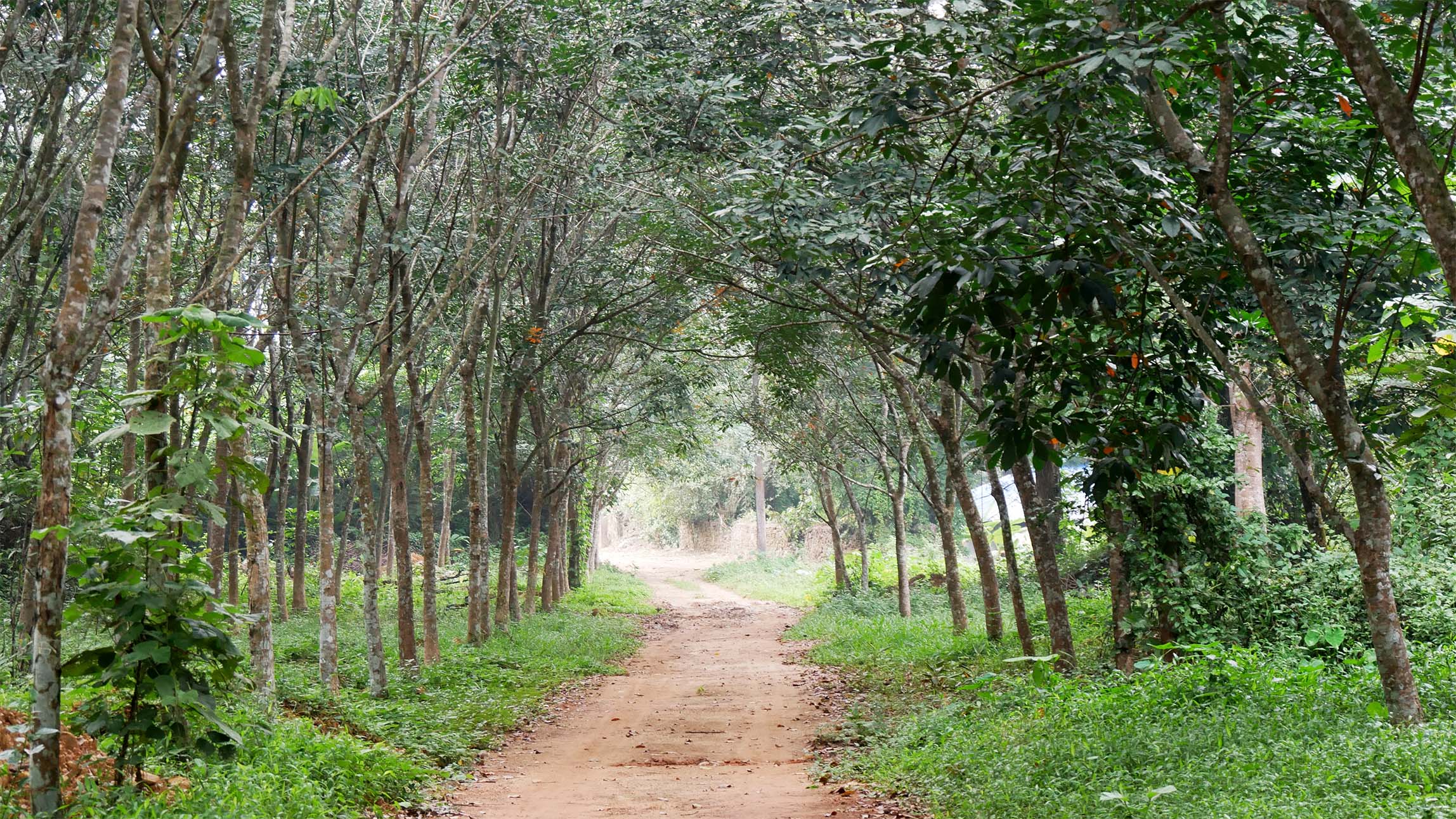
The Next Generation
Most houses in Mattappally Mana have only 2–3 older residents, as the younger ones have left for bigger towns for jobs. The Parur Raja family’s grounds were not as extensive as the Mattappally Mana. However, the situation here is slightly different since the current generation has taken up jobs that allow them to commute from home. Therefore, the place felt lively, with people coming and going for various reasons.
Namboothiri’s married son is working in a bank and stays with him. However, he plans to take up their traditional thantri job. Raja’s son, who runs a business (he has a Pepsi dealership), has taken up Kathakali as a hobby and has his father’s approval. He performs nearly 2–3 times a week in various temples north of Kottayam up to Kannur.
These descendants of former rajas and landlords have taken different career trajectories from their parents. This is because of their education, rapid urbanisation, larger cultural shift, and the socialist ideology that permeated Kerala in the mid-twentieth century during their formative years.
Many thanks to Vasudevan Namboothiri and Ravi Sarma Raja for contributing to this article.
Exhibition Research & Content : Janal, Kerala Museum 2024
The exhibition is based on the Janal Article : “Of Land and Castes, Part 1 : When Rajas and Landlords Speak.” JANAL, 2024
References
Edgar, Thurston. Castes and Tribes of Southern India. Vols 1-7. Madras: Government Press, 1909.
Gurukkal, Rajan, and Raghava Varier. History of Kerala: Prehistoric to the Present. Hyderabad: Orient BlackSwan, 2020.
Gurukkal, Rajan. ‘The Making and Proliferation of Jati: A Historical Inquiry’. Studies in History 31, no. 1 (2015): 30–50.
Malekandathil, Pius. ‘Dynamics of Trade, Faith and the Politics of Cultural Enterprise in Early Modern Kerala’. In Clio and Her Descendants: Essays in Honour of Kesavan Veluthat, 157–98. New Delhi: Primus Books, 2018.
Paul, Vinil. Adimakeralathinte Adrishyacharithram. Kottayam: D.C. Books, 2023.
Prakash, B.A. ‘Changes in Agrarian Structure and Land Tenures in Kerala: A Historical Review’. Thiruvananthapuram Economic Studies Society, August 2017.
Veluthat, Kesavan. Brahman Settlements in Kerala: Historical Studies. Calicut: Sandhya Publications, 1978.
